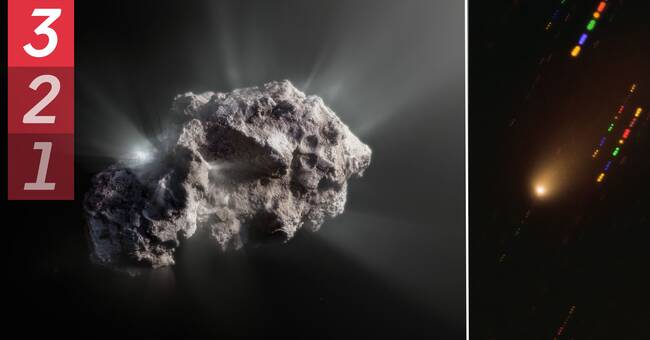Comet 2i / Borisov was discovered in the night sky in August 2019 and in December of the same year it passed us somewhere just outside the planet Mars' orbit.
Its high speed revealed that it did not belong in our solar system but originated from a completely different world.
- It is the first comet to come from another solar system and which we have discovered, says Maria Sundin who is an astronomer at the University of Gothenburg.
Pebbles in the comet
Many telescopes were aimed at the long-range comet and it has been shown that it carries a lot of information about where it comes from and what it has been through.
This week, two groups published results from these observations.
Bin Yang at the European Southern Observatory (ESO) has investigated the composition of pebbles in the comet's gas envelope.
She found that the comet formed in a cold place but contains material from several different regions in its home-planetary system.
From a world similar to ours
- We know that in our planetary system, Jupiter and Saturn must have thrown around our comets.
It seems as if the same thing has happened in this solar system, says Maria Sundin.
This indicates that the comet comes from a world similar to ours, and that there are large Jupiter-like planets there.
The result is published in Nature Astronomy.
Similar to Hale Bopp
The second study has been done by a group in Northern Ireland led by Stefano Bagnulo and shows that the comet is the most preserved we have ever seen.
The holder of that record was previously the comet Hale Bopp who could be seen with the naked eye in the starry sky in 1997.
Has not aged
By well-preserved is meant that the comet consists of original material from the birth cloud from which the entire planetary system was once formed.
Every time a comet rounds its sun, it ages a little.
The sun's warm rays cause it to change composition.
When comet Hale Bopp rounded the sun in 1997, it seemed to be the second time it did so.
But Borisov never seems to have been near a star before it passed our sun.
Never been near a sun
As Borisov passed the sun, small particles of volatile dust began to swirl in the comet's gas envelope.
The fact that the dust grains even remained on the comet reveals that it could not have traveled near a sun before.
It is completely intact and gives us a taste of what the original planetary system looked like.
- It is fantastic to be able to look at materials that come from a time when a solar system is formed, and in addition, this is from a completely different system than ours, says Maria Sundin.

